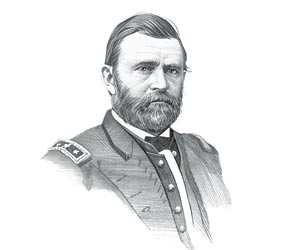|
|
|
|
|
More than 17,000 structures were destroyed and damages were estimated at $200 million dollars. Legend tells that the blaze was caused by a woman who knocked over a lighted kerosene lamp whilst she was milking a cow.
Cause of the Great Chicago Fire
The Legend of the Cow
Great Chicago Fire History for kids: Cause of the Great Chicago Fire The main people believed to be involved in the cause of the Great Chicago Fire were Mrs. Catherine O'Leary, an Irish immigrant, and her husband Patrick "Peg Leg" Sullivan who both strenuously denied causing the blaze. Another person involved was Dennis Regan, a neighbor, who tried to put the fire out with Daniel Sullivan. Ironically the O’Leary property survived the blaze. In 1997, the Chicago City Council passed a resolution acquitting Catherine O’Leary and her cow.
Great Chicago Fire Facts for kids The blaze raged across the city from October 8, 1871 to October 10, 1871 The blaze began in a barn located on the property of Patrick and Catherine O’Leary at 137 DeKoven Street on the southwest side of the city. The blaze spread across an area of about 4 miles (6 km) long and almost a mile wide A gale was blowing across the "Windy City" when the blaze began The terrible blaze destroyed 17,000 structures, including the business district of the city, damages were estimated at $200 million dollars. An estimated 300 people were killed in the blaze and over 100,000 people were left homeless. It was one of the largest U.S. disasters of the 19th century. On the same day that the Great Chicago Fire began, another terrible fire broke out in Peshtigo, Wisconsin, in which nearly 1,000 people perished. At the time of the blaze the population of the city was approximately 324,000, it was the second largest city in the United States. Nearly one third of the people were left homeless. The blaze caused pandemonium and there were many instances of theft and looting in the city. The chaos and crime in the Windy City resulted in martial law being declared on October 11, 1871 which was not lifted several weeks later. The Fire Department worked tirelessly to douse the flames and were helped by a rain on the last day of the blaze The Chicago Fire Department of 1871 employed just 185 firefighters with only 17 horse-drawn steam engines to protect the whole city The fire took such a hold on the city due to an error by the watchman, Matthias Schaffer. The fire fighters were initially sent to the wrong location which allowed the blaze to grow unchecked The blaze and windy conditions produced a terrifying fire whirl (aka a fire devil, fire tornado, or firenado) which added to the panic in the city. In November and December of 1871 the Board of Police and Fire Commissioners held an inquiry. The report produced by the Board of Police and Fire Commissioners was inclusive The legend of the cow started in the Chicago Evening Journal of October 9, 1871 when an article was printed claiming that the fire was caused by "a cow kicking over a lamp in a stable in which a woman was milking." The cow and kerosene lamp story puts the blame on Catherine O’Leary. She was the perfect scapegoat for the cause of the blaze because she was a poor, Irish Catholic immigrant. In 1997, the Chicago City Council passed a resolution acquitting Catherine O’Leary and her cow. The disastrous blaze will never be forgotten as the modern training academy of the Chicago Fire Dept. is located on the site of the O’Leary property where the Great Chicago Fire began. |
| US American History |
| 1866-1881: Reconstruction Era |
|
|
|
|
|
First Published2016-04-19 | |||
|
Updated 2018-01-01 |
Publisher
Siteseen Limited
| ||
|
|

